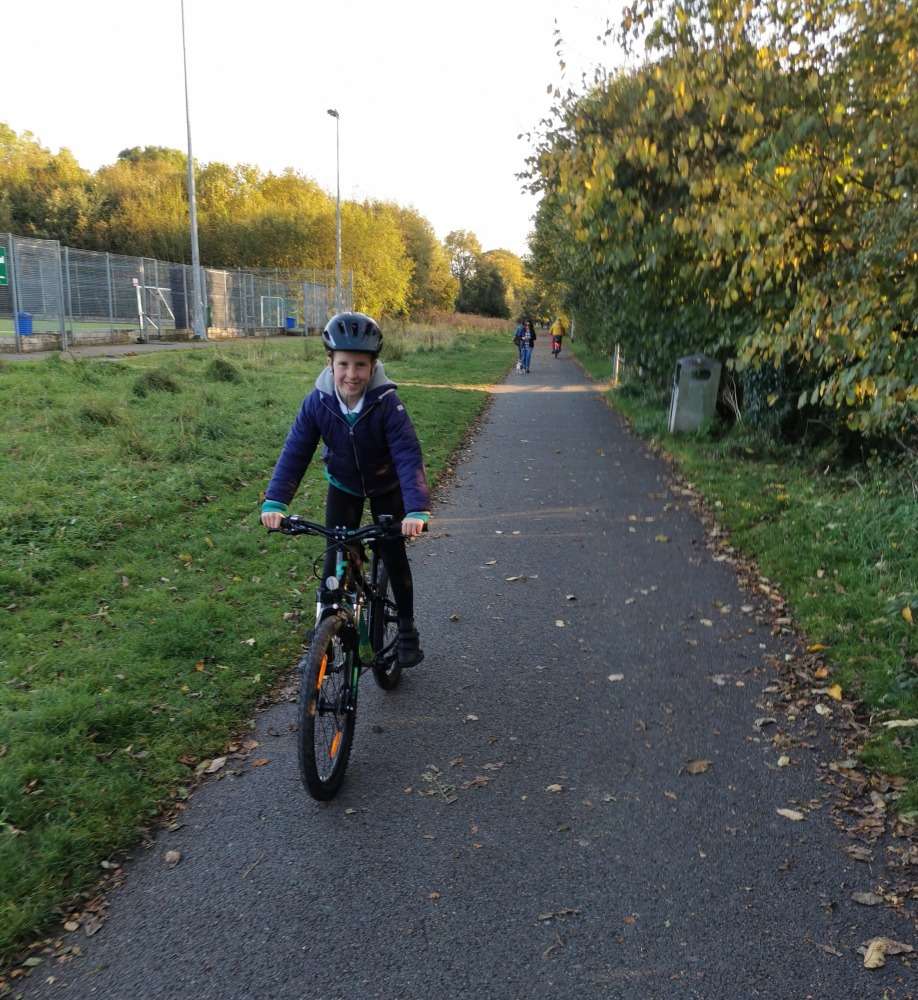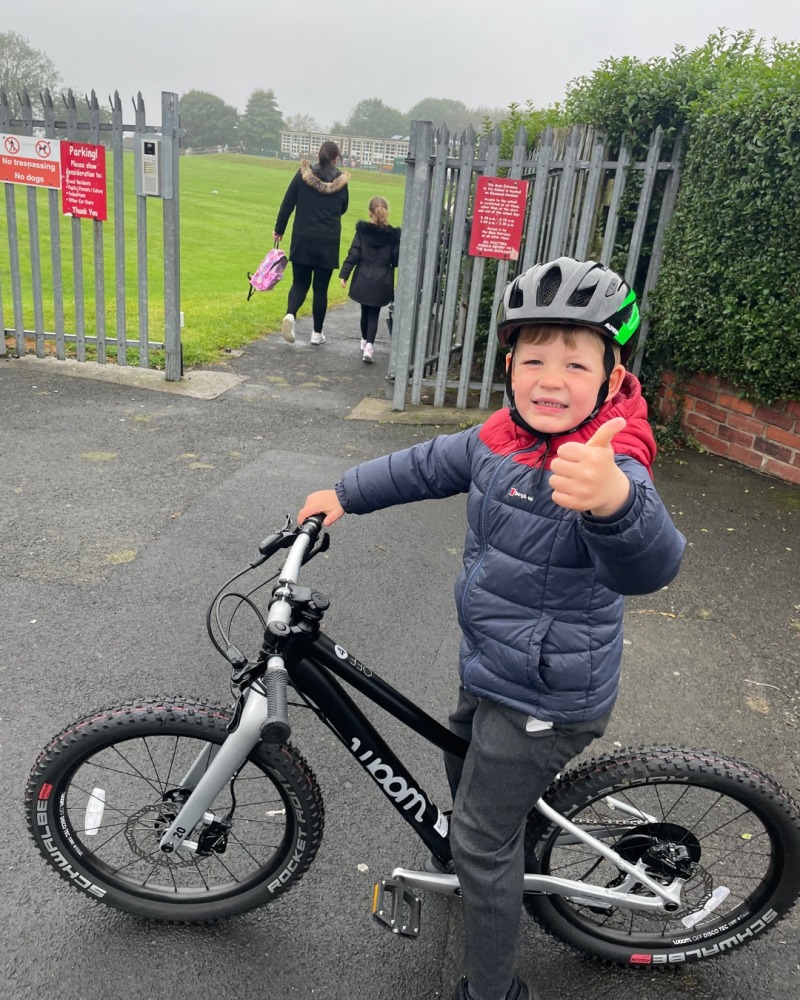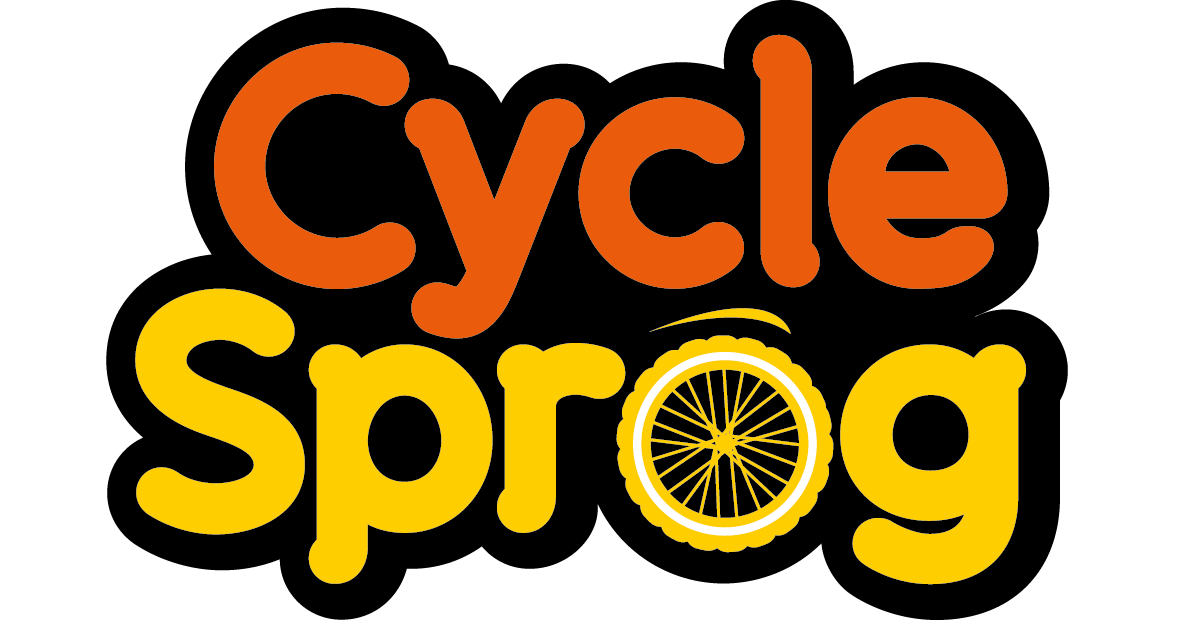Bikeability – a parents guide
If your child has come home from school with a letter saying they’ll be taking part in Bikeability, you might be wondering what exactly that means and whether your child is ready for it. This guide explains what Bikeability is, what your child needs to take part, and how to get the most out of the experience.
For many children, Bikeability is their first formal experience of cycling with others in a structured setting. It can feel like a big step, especially if your child is still building confidence on two wheels. While some schools offer beginner sessions, most Bikeability training is aimed at children who can already ride without stabilisers. If your child is still learning the basics, our article Is your child ready to learn to ride a pedal bike? can help you work out whether they’re ready and how to support them if they’re not quite there yet.
Your child will usually need to bring their own bike to Bikeability, so if they don’t yet have one, or their bike is too small for them, check out our guide to the best kids’ bikes to find a suitable option that will help them get the most out of their training.
Cycle Sprog is a reader-supported website. When you buy through links on this page we may earn an affiliate commission.
What is Bikeability?
Bikeability is today’s version of the former cycling proficiency test, but brought up to modern standards. It’s designed to teach children how to cycle confidently and safely, with practical training that goes beyond the playground.
Bikeability is funded by the Department for Transport and delivered by trained instructors across England, mostly through schools. The cycling lessons are built on three levels of training that gradually introduce children to real-world cycling, starting with basic control skills and moving on to cycling on busier roads.
Thousands of schools across the country take part every year, and it’s a great way to help kids build independence, confidence and road awareness.

What does my child need to take part in Bikeability?
Most Bikeability sessions take place during school hours, sometimes in PE time. Your school should let you know what’s needed, but here’s a general checklist:
- A bike in good working order – It should be the right size for your child, with working brakes and properly inflated tyres. If you’re not sure what size they need, check out our guide: What size bike does my child need? You can also ask at school or visit a local bike shop. If they’ve outgrown their current bike or you’re buying one for the first time, take a look at our roundup of the best kids bikes for guidance.
- A helmet – Most Bikeability providers require one. If your child doesn’t have a helmet, check whether the school or training provider can lend one. You’ll also find our recommendations for the best kids bike helmets useful if you’re buying new.
- Comfortable clothing – PE kit or sportswear is ideal if the school uniform is too restrictive. School will usually advise on what clothes to wear. Layers and a packable waterproof cycling jacket are helpful if the weather’s unpredictable.
- Gloves (optional) – Can be useful for comfort and protection. Our guide to the best kids cycling gloves can help you choose a pair that fits well and suits the conditions.
Some schools or training providers have a small supply of bikes or helmets to lend. It’s always worth asking if you don’t have one available.
Bikeability levels explained
Bikeability is split into three main levels, each suited to different ages and stages of cycling confidence.
Bikeability Level 1
Usually taught in Years 3 or 4 (ages 7–9), this level takes place on the playground or a traffic-free area. Children learn to:
- Check their bike is safe
- Start and stop safely
- Ride in a straight line and control their speed
- Use gears (if they have them)
Bikeability Level 2
Typically delivered in Years 5 or 6 (ages 9–11), this level moves onto quiet local roads. Children will:
- Ride safely with other cyclists and vehicles
- Look behind and signal correctly
- Understand road positioning
- Negotiate simple junctions
Bikeability Level 3
Usually offered at the start of secondary school (or sometimes to more advanced Year 6 riders), Level 3 teaches advanced skills on busier roads. Riders learn to:
- Tackle complex junctions and roundabouts
- Use cycle lanes and multi-lane roads
- Make independent decisions in real-world traffic
In some schools, Levels 1 and 2 are delivered together as part of a single Bikeability course, usually in Years 5 or 6. Children begin with off-road skills to build control and confidence (Level 1), before progressing to on-road training (Level 2) if they're ready. This combined format is a practical way to cover the key skills in a short space of time, especially when schools have limited scheduling flexibility.

Frequently asked questions about Bikeability
Got questions about Bikeability? Here are some of the most common things parents want to know.
What if my child can’t cycle when invited to take part in Bikeability?
Don’t panic! Many Bikeability providers offer Learn to Ride sessions for children who haven’t mastered cycling yet. Ask your school if this is available – or look for community sessions in your area. These are often offered for free by your local authority.
What happened to Cycling Proficiency?
The Cycling Proficiency Test, once a familiar part of childhood for many in the UK, was officially replaced in 2007 by the Bikeability scheme.
What about Bikeability in Scotland and Wales?
While Bikeability is the standard cycle training programme for children in England, children in Scotland and Wales are likely to follow slightly different schemes.
Cycle training in Scotland
Scotland runs its own version of the programme, called Bikeability Scotland, coordinated by Cycling Scotland. It’s very similar to the English Bikeability scheme and is usually delivered in schools during the school day.
There are three levels (like in England), and the focus is still on safe, confident cycling in real-life conditions. However, delivery can vary between local authorities, and in some areas it's run by school staff who have been trained to deliver the course.
Go to the Cycling Scotland website for more information on Bikeability in Scotland.
Cycle training in Wales
In Wales, cycle training is usually delivered through local councils, rather than a single national programme like Bikeability. However, the training content is very similar and follows the same national standard and is called National Standards Cycle Training.
Cycle training is often offered in schools, especially at primary level, but coverage may vary by area.
You can ask your child’s school or check with your local authority to find out what’s on offer in your part of Wales.
Contact your local authority to find out about cycle training in Wales.

Is cycling proficiency still taught in schools?
Yes, but under a new name! Bikeability has replaced the old cycling proficiency test. It’s more up-to-date and focused on real-life cycling skills.
Help, my child missed Bikeability in school!
Some local authorities and organisations offer Bikeability outside of school, especially in school holidays. You can search the Bikeability website or contact your council to find out what’s available near you.
In Scotland, check with Cycling Scotland or for Wales, your local authority.
Does my child get a Bikeability certificate?
Yes! At the end of each level, children usually receive a Bikeability certificate, along with a badge and a booklet. These are a fun way to celebrate their achievement and show what they’ve learned. Some instructors also write personalised feedback to highlight what your child did well and what they can keep working on. It’s a proud moment, so keep an eye out for it in their school bag!
I would like some cycle training too!
That’s great to hear! Many Bikeability providers also offer adult cycle training, whether you’re a total beginner, returning to cycling after a break, or wanting to build confidence riding on roads. Some councils provide free or low-cost sessions for adults, including family cycling courses so you can ride together.
Visit the Bikeability website and look for adult training options, or contact your local council to see what’s available near you. In Scotland and Wales, check with Cycling Scotland or your local authority.
Are balance bike lessons part of Bikeability?
A balance bike can be a great way to help children learn the essential skill of balancing before moving on to pedalling. Unlike bikes with stabilisers, balance bikes teach kids to glide, steer, and control their movement, all of which build confidence and coordination.
Many Bikeability providers offer Bikeability Balance sessions for younger children, often in Reception or Key Stage 1, using balance bikes to develop these core skills. If your child hasn’t yet learned to ride, this is a great place to start.
If you’re looking for a balance bike, check out our guide to the best balance bikes to find one that suits your child’s age and ability.

Should I let my child take part in Bikeability?
Yes, definitely! Bikeability is a fantastic way for children to gain confidence and learn how to cycle safely. The training is designed to be fun, supportive, and age-appropriate, helping children develop essential life skills like road awareness, communication, and independence.
Is Bikeability safe?
Bikeability is designed with safety in mind. Instructors are fully trained and follow strict guidelines to ensure sessions are appropriate for the children’s age and ability. Training starts in traffic-free areas and only progresses to quiet roads when children are ready.
Group sizes are kept small, and risk assessments are carried out for all routes. If you have concerns, talk to your child’s school or the training provider; they’ll be happy to explain what’s involved.
Does every school take part in Bikeability?
Many schools in England offer Bikeability at some point, but this depends on funding. If your child’s school doesn’t currently offer it, you can contact the school or your local council to ask if it’s something they can arrange.
What’s next after Bikeability?
The best thing you can do is keep the momentum going; keep on riding as a family. Regular cycling helps children build on what they've learned and gain even more confidence on two wheels. Whether it’s a ride to the park, local paths, or the school run, every bit of practice helps.
Check out our Where to Ride page for ideas on fun, family-friendly routes to explore together.

Comments